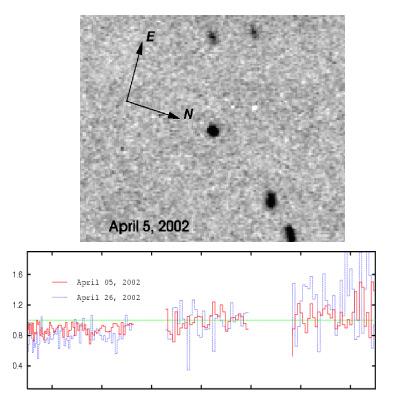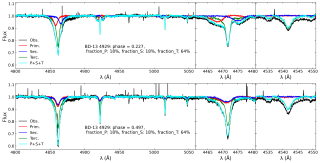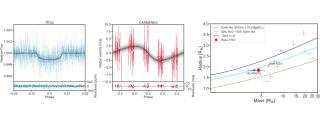Imagen del cometa 124P/Mrkos (arriba) y espectros (abajo) obtenidos en el IR cercano con el espectrógrafo NICS del Telescopio Nazionale Galileo, en el Observatorio del Roque de los Muchachos (ORM).
Fecha de publicación
Referencias
A&A 398, L45-L48 (2003)
Observar el núcleo de un cometa es difícil, porque los cometas suelen estar activos cerca del Sol, con lo que sus núcleos están ocultos por la Coma. 124P/Mrkos es un cometa de baja actividad que se observó a 1.9 Unidades Astronómicas (UA) del Sol. El espectro de los cometas nos da información, no sólo de la composición del cometa, sino también de la composición primigenia del Sistema Solar. En este caso, el espectro resulta muy parecido al de los asteroides tipo D ó P, típicos de la parte externa del cinturón de asteroides.
Más información
Near-infrared spectroscopy of the nucleus of comet 124P/Mrkos
Comet nuclei and other related icy minor planets like the trans-neptunian objects (TNOs) and Centaurs are remnant planetesimals from the early solar system formation stages. They probably have the giant planet region and the EdgeworthKuiper belt as a common origin and contain some of the least modified materials remaining from the protosolar nebula. The study of their surface properties is very important from a cosmogonical point of view (Licandro et al. 2002b; Campins & Fernandez 2002), as it could provide important clues to understand the conditions existing at the early stages of the solar system formation. This study also provides information on their composition, on the processes affecting them, and on the conditions prevailing in the regions of the solar system that they occupy.
Año
2003



